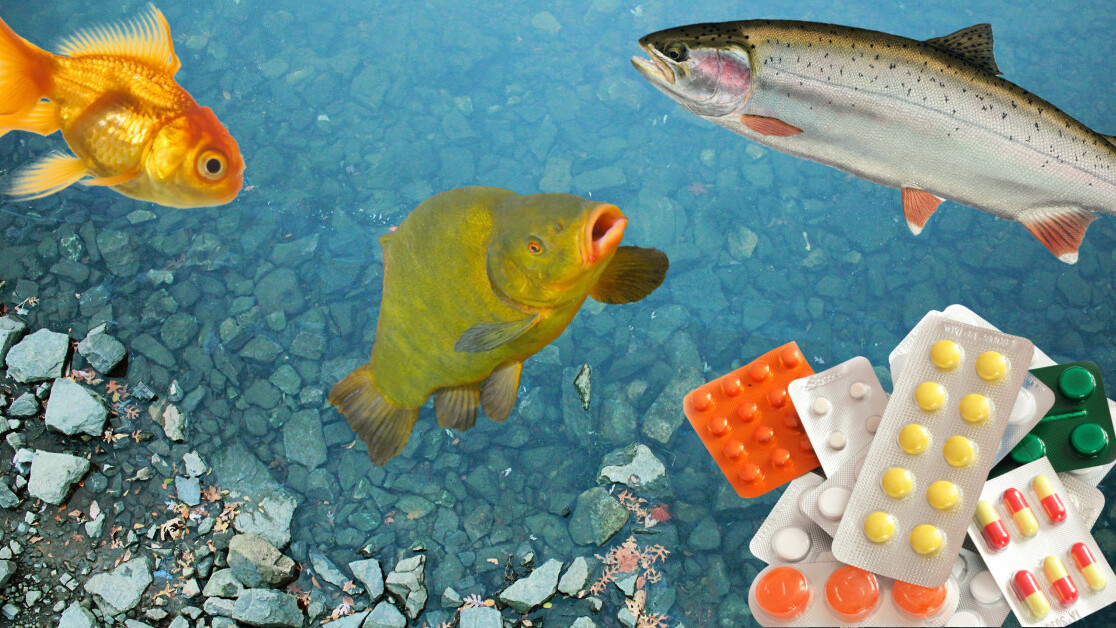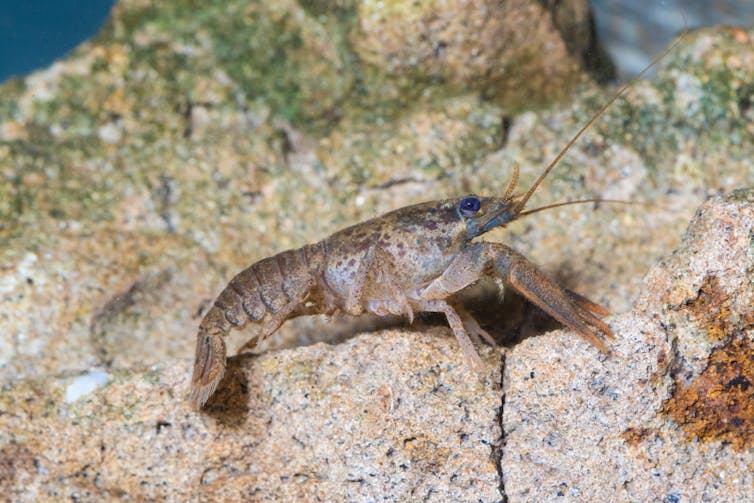
Antidepressants don’t just affect human libidos. New research shows that female starlings fed food spiked with the antidepressant fluxoxetine (Prozac), were less “attractive” to males and so less likely to mate. This is the latest evidence highlighting the potential harm of the drugs that we are releasing into the environment.
Like many drugs we consume, antidepressants don’t get fully broken down in our bodies are excreted through our urine, from where they find their way to wastewater treatment plants. These facilities don’t have the ability to break down the drugs, which then enter our rivers and estuaries, and come into contact with and build up in our wildlife.
With the numbers of young and old people with mental health problems on the rise, and rapid increases in prescriptions of antidepressants and anti-anxiety medications, these problems of water contamination are set to get worse.
We already know quite a lot about the effects of pollution of animal behavior. We know that chemicals can alter wildlife’s aggression, ability to smell, courtship, and reaction to stimuli such as light. All these behaviors are critical for animals escaping from predators, finding food and mates, or defending territories.
But most of this data comes from studies in labs. And an animal’s behavior is often very sensitive to its surroundings. So to work out exactly how drug pollution is affecting animals in the wild, my colleagues and I have turned to technology to track, measure and analyze their behavior.
One of the difficulties with this is that animal behavior often changes quickly and is hard to record without disturbing the specimens you’re trying to monitor, especially in something like a murky river.
To take humans as an example, an individual might not be aggressive or anxious all the time. Their behavior might alter depending on whether they were in a large or contained space, or the time of day.
If you wanted to measure the “feminizing effect” of sewage effluent on fish, you could collect some fish upstream and downstream of sewage facility and dissect them. Or you could take blood samples that give you a snapshot of their physiology over time. Alternatively, you could cage an animal downstream of a sewage treatment plant and take similar measurements.
Technical solutions
But when trying to measure fish behavior, there is no easy blood test or tissue sample that gives you a snapshot of abnormal behavior. Caging animals naturally alters their behavior. This is where technology can help.
For example, tagging animals with GPS markers and following them with satellites has enabled scientists to study the movement of giant blue whales in response to noise, as well as diving in turtles, and the migration of birds.
These technologies have enabled scientists to determine the new parts of the life histories of remote and endangered species, such as previously unknown migration routes, and how they respond to food, predators, and even human disturbances such as shipping.

Previous research in my own lab has shown that crustaceans exposed to antidepressants spend five times more time in the light compared to animals not given drugs. Using infrared cameras and tracking software, we are now optimizing our experiments so that we can measure their behavior in the dark.
The software has enabled us to automatically measure many aspects of the crustaceans’ behavior, such as what activities they undertake, the distance and speed of their movements and the speed and angles of their turns. Before, we would have had to painstakingly watch hours of boring videos of their movements and manually record their specific actions.
Newer software systems now include behavior-recognition software. For example, if we were studying a rat or mouse, the software would automatically record the time the animal spent grooming, sniffing, or eating, to name just a few types of behavior.
The challenges to come will involve using machine learning algorithms (a form of artificial intelligence) that enable the computer to identify patterns of behavior we didn’t know existed and very subtle behaviors not recognizable to humans. This will help researchers discover unusual types of behavior caused by pollution.
Our next goal is also to determine whether the effects of antidepressant pollution recording in the lab are also occurring in the wild. Researchers in Sweden have been addressing this very question using sound recordings to track the behavior of fish exposed to anti-anxiety medication (oxazepam) in a whole lake.
The fish were fitted with acoustic transmitters whose signals were picked up by receivers around the lake that could accurately triangulate the positions of the fish. Interestingly, fish exposed to oxazepam were more bold and ventured further from the edges of the lake, had larger territories and were generally more active.
These field results mirrored those gathered in the lab, giving some degree of confidence that lab-based experiments may be providing good information about the effects of drugs in the wild.
In future, we hope the hardware used to track animals will become even smaller so that even tiny invertebrates such as shrimp and snails can have their behavior monitored. But even now, this technology is already giving us great insight into the behavior of our wildlife, and providing a worrying indication of the impact of drugs on the environment.![]()
This article is republished from The Conversation by Alex Ford, Professor of Biology, University of Portsmouth under a Creative Commons license. Read the original article.
Get the TNW newsletter
Get the most important tech news in your inbox each week.




